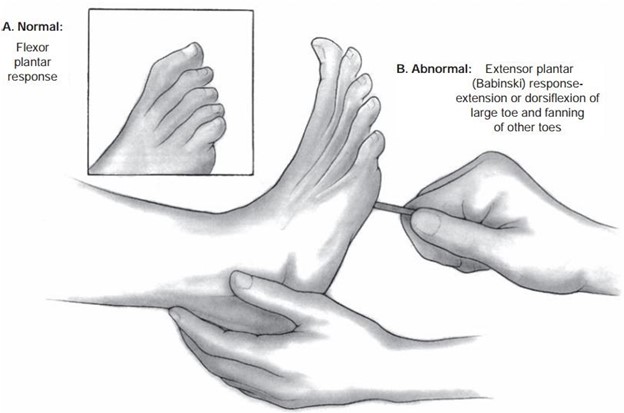A nurse at an outpatient clinic receives a call from a client who reports experiencing syncope after starting a new prescription for enalapril.
Which of the following instructions should the nurse give the client?
Decrease daily fluid intake.
Withhold the medication if pulse rate is less than 60/min
Rise slowly from a sitting position to a standing position
Increase dietary potassium
The Correct Answer is C
Orthostatic hypotension, which is a sudden drop in blood pressure upon standing, can be a side effect of enalapril and may lead to syncope. Instructing the client to rise slowly from a sitting to a standing position helps minimize the risk of a sudden drop in blood pressure and decreases the chances of syncope occurring.
Decreasing fluid intake is not likely to be the cause of syncope related to enalapril. It is important for clients to maintain adequate hydration, especially if they are experiencing side effects such as orthostatic hypotension.
While a low pulse rate may indicate bradycardia, it is not the primary concern in this situation. Orthostatic hypotension leading to syncope is the main issue, and the client should be instructed to rise slowly to prevent it.
While enalapril is an angiotensin-converting enzyme (ACE) inhibitor that can increase potassium levels in the blood, it is not directly related to syncope. Dietary changes should be made under the guidance of a healthcare provider based on individual needs and blood test results.

Nursing Test Bank
Naxlex Comprehensive Predictor Exams
Related Questions
Correct Answer is B
Explanation
The plantar Babinski reflex is assessed by stroking the sole of the foot from the heel towards the toes. A normal response is the flexion or curling of the toes. An abnormal response, known as a positive Babinski sign, is the extension and fanning out of the toes, which indicates an upper motor neuron lesion.

"Place your foot in my hand and I will tap the back of your heel": This instruction is more relevant to testing the Achilles tendon reflex, where the nurse taps the back of the heel to elicit a plantarflexion response.

"Sit on the edge of the bed while I tap your knee": This instruction is more relevant to testing the patellar reflex, also known as the knee-jerk reflex. The nurse taps the patellar tendon just below the kneecap to elicit a reflexive contraction of the quadriceps muscle.

"Relax your arm across your chest and I will test your elbow extension": This instruction is more relevant to testing the triceps reflex, where the nurse taps the triceps tendon to elicit a reflexive extension of the elbow.

Correct Answer is A
Explanation
Explanation
A. Administer the medication to the toddler each evening.
Montelukast is a long-term control medication used for the management of asthma in both children and adults. It is typically taken once daily in the evening to provide continuous asthma control. Consistency in taking the medication is important to maintain its effectiveness.
Providing an additional dose of the medication prior to physical activity in (option B) is not a standard recommendation for montelukast use. Montelukast is not a rescue medication and does not provide immediate relief for asthma symptoms triggered by physical activity. In such cases, a short-acting bronchodilator medication, such as albuterol, is commonly used prior to physical activity.
Mixing the medication in juice prior to administration in (option C) is not recommended unless specifically instructed by the healthcare provider or indicated in the medication instructions.
Montelukast is available in various formulations, including chewable tablets and granules, which can be taken directly or mixed with certain foods or liquids. However, the specific instructions should be followed as provided by the healthcare provider or medication label.
Administering the medication when the toddler in (option D) has an acute asthma attack is not the intended use of montelukast. Montelukast is a long-term control medication aimed at preventing asthma symptoms and maintaining asthma control over time. For acute asthma attacks, a short-acting bronchodilator medication is typically used.
Therefore, the nurse should instruct the parents to administer the medication to the toddler each evening (option A) as part of the routine, long-term management of asthma.
Whether you are a student looking to ace your exams or a practicing nurse seeking to enhance your expertise , our nursing education contents will empower you with the confidence and competence to make a difference in the lives of patients and become a respected leader in the healthcare field.
Visit Naxlex, invest in your future and unlock endless possibilities with our unparalleled nursing education contents today
Report Wrong Answer on the Current Question
Do you disagree with the answer? If yes, what is your expected answer? Explain.
Kindly be descriptive with the issue you are facing.
